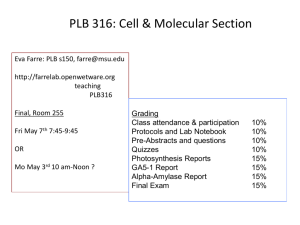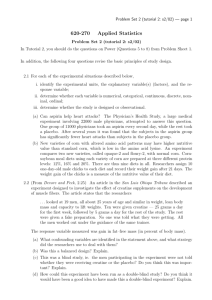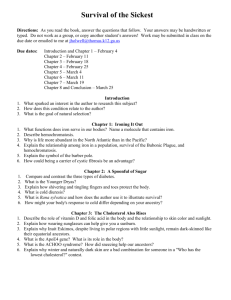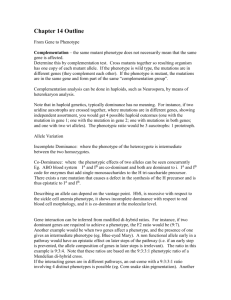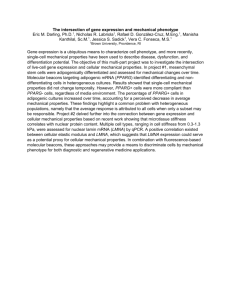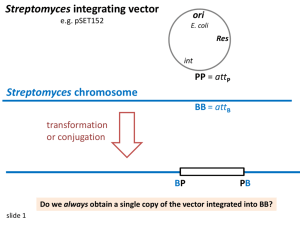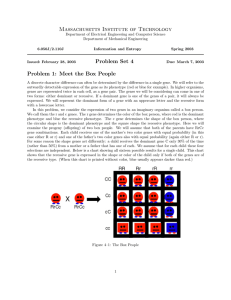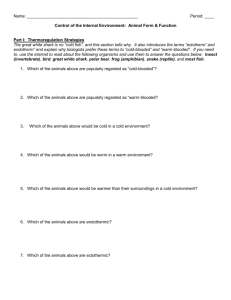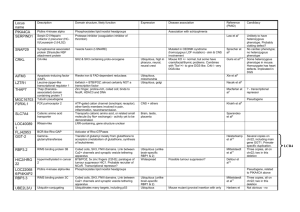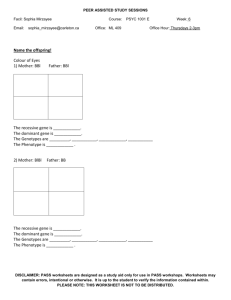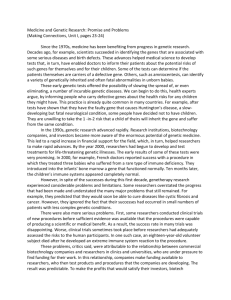Tutorial #7 BIOL 433 Tues. March 1, 2016 Please read the following
advertisement
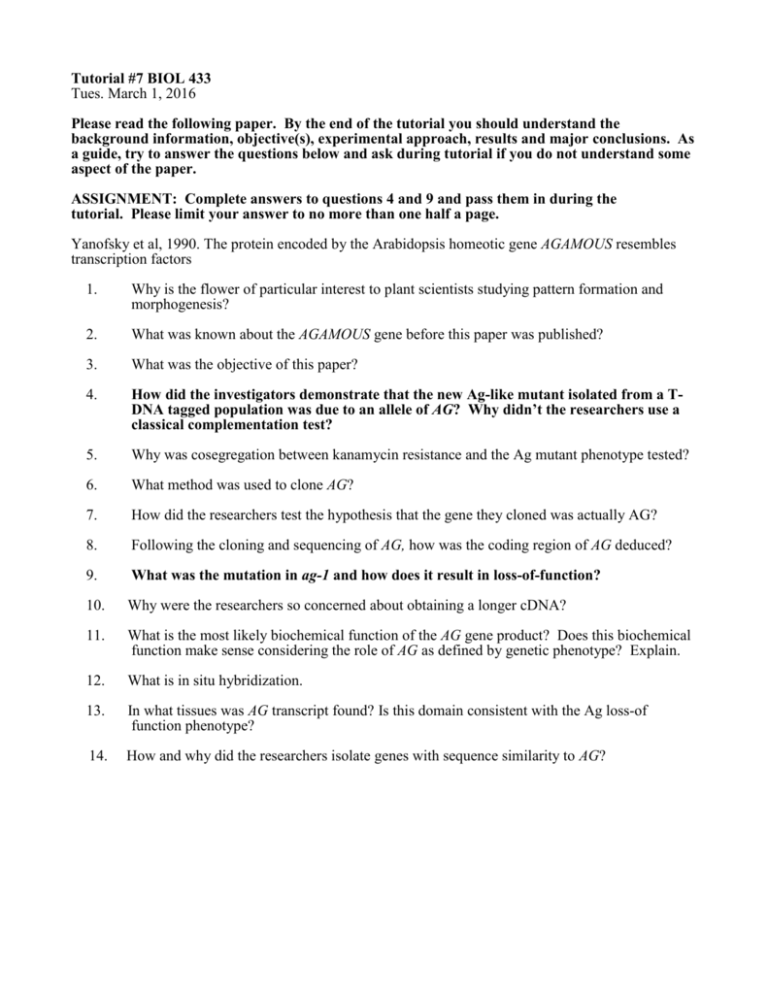
Tutorial #7 BIOL 433 Tues. March 1, 2016 Please read the following paper. By the end of the tutorial you should understand the background information, objective(s), experimental approach, results and major conclusions. As a guide, try to answer the questions below and ask during tutorial if you do not understand some aspect of the paper. ASSIGNMENT: Complete answers to questions 4 and 9 and pass them in during the tutorial. Please limit your answer to no more than one half a page. Yanofsky et al, 1990. The protein encoded by the Arabidopsis homeotic gene AGAMOUS resembles transcription factors 1. Why is the flower of particular interest to plant scientists studying pattern formation and morphogenesis? 2. What was known about the AGAMOUS gene before this paper was published? 3. What was the objective of this paper? 4. How did the investigators demonstrate that the new Ag-like mutant isolated from a TDNA tagged population was due to an allele of AG? Why didn’t the researchers use a classical complementation test? 5. Why was cosegregation between kanamycin resistance and the Ag mutant phenotype tested? 6. What method was used to clone AG? 7. How did the researchers test the hypothesis that the gene they cloned was actually AG? 8. Following the cloning and sequencing of AG, how was the coding region of AG deduced? 9. What was the mutation in ag-1 and how does it result in loss-of-function? 10. Why were the researchers so concerned about obtaining a longer cDNA? 11. What is the most likely biochemical function of the AG gene product? Does this biochemical function make sense considering the role of AG as defined by genetic phenotype? Explain. 12. What is in situ hybridization. 13. In what tissues was AG transcript found? Is this domain consistent with the Ag loss-of function phenotype? 14. How and why did the researchers isolate genes with sequence similarity to AG?
